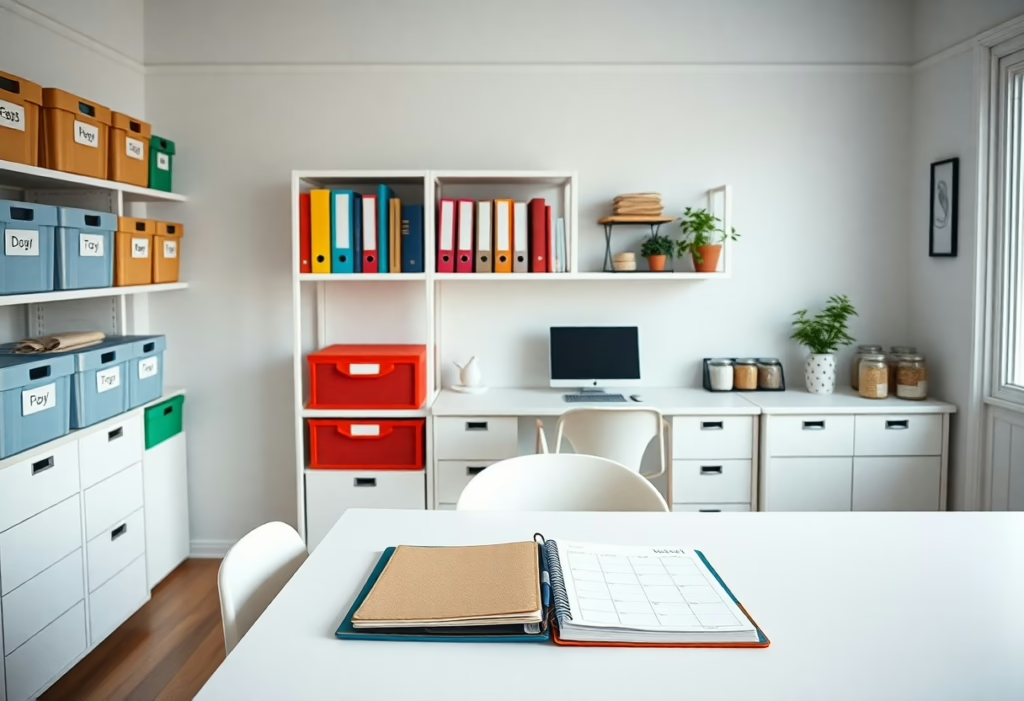The Psychology of Organized Living
The journey toward creating a stress-free sanctuary begins with understanding that organization transcends mere aesthetic appeal. In today’s fast-paced world, where our living spaces often mirror the chaos of our daily lives, establishing a structured approach to home organization has become essential for both mental and physical well-being. Through years of experience and research, I’ve discovered that our environment profoundly impacts our mental state. When surrounded by clutter, our minds tend to mirror that chaos, leading to increased stress levels and decreased productivity. Research consistently shows that organized environments promote better focus, reduce anxiety, and create a foundation for improved decision-making. By establishing order in our physical space, we simultaneously create mental clarity, allowing us to approach daily challenges with renewed energy and purpose.
Building Your Organizational Framework
Success in home organization relies on developing sustainable weekly routines rather than attempting sporadic massive cleanouts, which often lead to burnout and frustration. This approach involves dedicating specific times for different organizational tasks, ensuring that no area of your home becomes overwhelmed with clutter. Moving beyond traditional room-by-room organization, adopting a category-based approach provides more comprehensive and lasting results. This method involves focusing on specific types of items across your entire home, such as tackling all books at once or organizing all electronic devices and their accessories. This strategy prevents the common problem of having duplicate items scattered throughout different rooms and creates more intuitive storage solutions that serve your daily needs effectively.
Modern Solutions for Home Organization
In our digital age, leveraging technology for home organization has become increasingly valuable. Various apps and digital tools can help track household inventories, create maintenance schedules, and remind us of regular organizational tasks. These technological aids transform traditional organization methods into streamlined, efficient processes that align with our modern lifestyles while reducing paper clutter and improving accessibility to important information. Alongside digital solutions, implementing appropriate physical storage systems remains crucial. This involves carefully assessing your storage needs and designing systems that maximize available space while maintaining accessibility. Whether utilizing vertical storage in small spaces or creating designated zones in larger areas, the key lies in developing solutions that are both practical and sustainable for long-term use.
Daily Habits and Seasonal Maintenance
The foundation of a well-organized home rests on establishing daily maintenance rituals that prevent clutter accumulation. These small, consistent actions, such as the ten-minute evening reset or the morning surface sweep, create a cumulative effect that maintains order without requiring significant time investment. By integrating these habits into your daily routine, organization becomes an effortless part of your lifestyle rather than a dreaded task. As seasons change, so do our organizational needs. Implementing quarterly reviews and adjustments ensures that your organization systems evolve with your lifestyle. This includes rotating seasonal items, reassessing storage solutions, and updating organizational systems to better serve current needs.

The Minimalist Approach to Organization
While complete minimalism isn’t necessary for effective organization, incorporating minimalist principles can significantly enhance your organizational success. This involves regularly evaluating possessions for their utility and joy, maintaining clear surfaces, and being intentional about new acquisitions. The minimalist mindset helps prevent clutter accumulation and maintains the serenity of your organized spaces. By focusing on quality over quantity and being mindful of what we bring into our homes, we create environments that support rather than overwhelm us.
Sustainable Organization Systems
Creating lasting organization requires developing habits that align with your natural tendencies and lifestyle requirements. Rather than forcing rigid systems that fight against your natural inclinations, focus on creating flexible routines that work with your schedule and preferences. Visual organization plays a crucial role in maintaining order and creating a sense of calm in your space. This involves considering how items are displayed, using consistent storage solutions, and implementing color coordination where appropriate. The visual harmony created through thoughtful organization contributes significantly to the overall sense of peace in your environment.
Adapting to Change
Life is dynamic, and your organization systems should be equally flexible. Whether accommodating work-from-home requirements, growing families, or changing hobbies, your organizational approach should evolve to meet new needs. This adaptability ensures that your space continues to support your lifestyle effectively, regardless of how it changes over time. The key is creating systems that can grow and change with you, rather than rigid structures that become obsolete when life circumstances shift.
Your Organization Journey
Creating and maintaining an organized home is an ongoing journey rather than a destination. By implementing these weekly habits and principles, you establish a foundation for lasting order and peace in your living space. Remember that the goal isn’t perfection but rather creating a functional, harmonious environment that supports your daily life and contributes to your overall well-being. Through consistent effort and thoughtful adaptation of these principles, you can transform your living space into a sanctuary that nurtures both your physical needs and mental peace. The journey to an organized home may have its challenges, but the rewards of living in a space that supports and uplifts you make every effort worthwhile.



